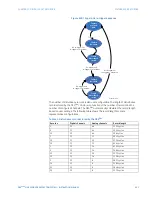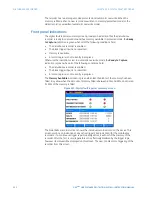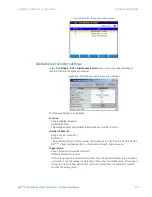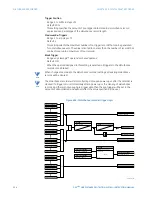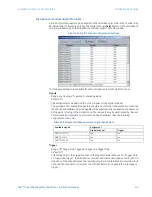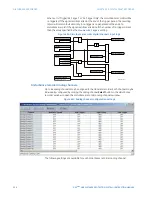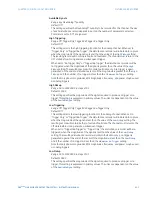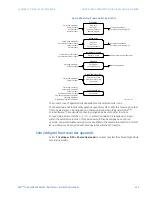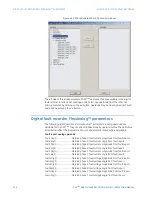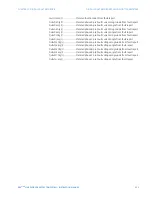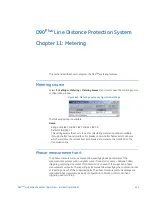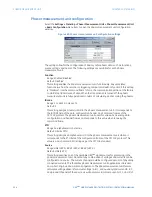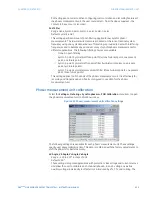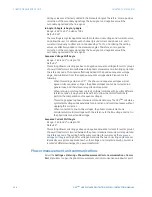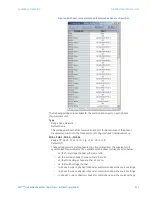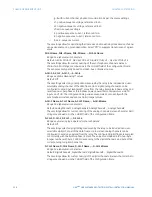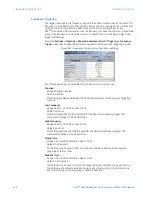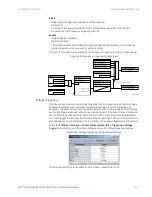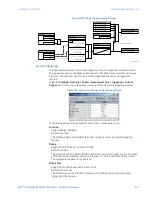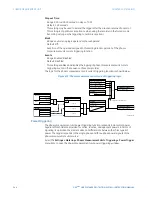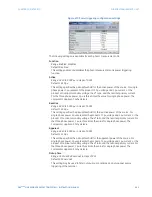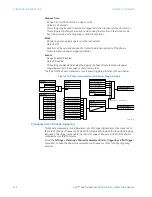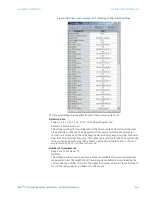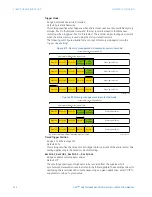
CHAPTER 11: METERING
PHASOR MEASUREMENT UNIT
D90
PLUS
LINE DISTANCE PROTECTION SYSTEM – INSTRUCTION MANUAL
535
both voltages and currents. When configuring communication and recording features of
the phasor measurement unit, the user could select – from the above superset – the
content to be sent out or recorded.
Post-Filter
Range: None, Symm-3-point, Symm-5-point, Symm-7-point
Default: Symm-3-point
This setting specifies amount of post-filtering applied to raw synchrophasor
measurements. The raw measurements are produced at the rate of nominal system
frequency using one-cycle data windows. This setting is provided to deal with interfering
frequencies and to balance speed and accuracy of synchrophasor measurements for
different applications. The following filtering choices are available.
–
None: No post-filtering.
–
Symm-3-point: Symmetrical three-point filter (one historical point, one present
point, one future point).
–
Symm-5-point: Symmetrical five-point filter (two historical points, one present
point, two future points).
–
Symm-7-point: Symmetrical seven-point filter (three historical points, one present
point, three future points).
This setting applies to all channels of the phasor measurement unit. It is effectively for
recording and transmission on all ports configured to use data for the phasor
measurement unit.
Phasor measurement unit calibration
Select the
Settings > Metering > Synchrophasors > PMU Calibration
menu item to open
the phasor measurement unit calibration window.
Figure 463: Phasor measurement unit calibration settings
The following settings are available for each phasor measurement unit. These settings
specify user angle calibration data. This data is combined with the factory adjustments to
shift the phasors for better accuracy.
Va Angle, Vb Angle, Vc Angle, Vx Angle
Range: –5.00 to 5.00° in steps of 0.05
Default: 0.00°
These settings recognize applications with protection class voltage and current sources,
and allow the user to calibrate each channel (phase A, B, and C voltage, as well as
auxiliary voltage) individually to offset errors introduced by VTs, CTs, and cabling. The

